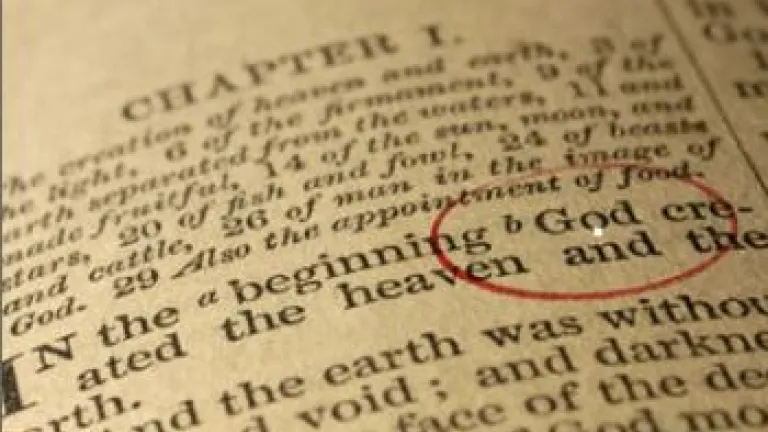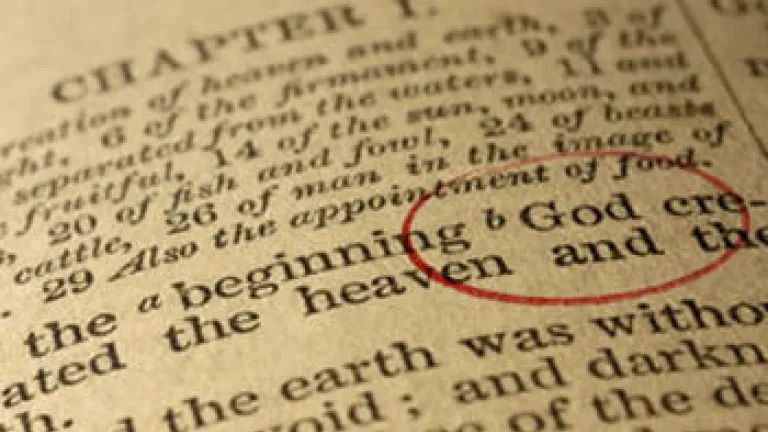God, Science and the Bible: Peacocks' feather displays defy evolutionist explanations
Research indicates that peacocks' feathers do not support evolution or Darwin's solution of sexual selection
"The sight of a feather in a peacock's tail, whenever I gaze at it, makes me sick!" wrote Charles Darwin to botanist Asa Gray on April 3, 1860.
His comments aren't surprising. After all, the stunning colors of the peacock's feathers are hard for evolutionists to explain. According to Darwinian evolution, natural selection is supposed to explain features in animals that give them a distinct advantage in their struggle for survival.
Yet the colorful array of the feathers in a peacock's tail certainly doesn't give it an advantage. As a matter of fact, the elaborate tail is a major hindrance to fleeing from predators and a bull's-eye for them to target.
So how could Darwin wriggle out of this dilemma?
He once noted to a friend that he prided himself as an expert "in the master art of wriggling" (Life and Letters of Charles Darwin, 1891, Vol. 2, p. 239).
Darwin came up with another explanation to salvage his theory—what he called "sexual selection."
He speculated in his book The Origin of Species: "This leads me to say a few words on what I have called Sexual Selection. This form of selection depends, not on a struggle for existence in relation to other organic beings or to external conditions, but on a struggle between the individuals of one sex, generally the males, for the possession of the other sex.
"The result is not death to the unsuccessful competitor, but few or no offspring . . . thus Sir R. Heron has described how a pied peacock was eminently attractive to all his hen birds. I cannot here enter on the necessary details; but . . . I can see no good reason to doubt that female birds, by selecting, during thousands of generations, the most melodious or beautiful males according to their standard of beauty, might produce a marked effect" (1872, pp. 94-95).
This sounds plausible, but does the evidence prove the point? Not according to a recent and thorough study on the attractiveness of the peacock's feathers to the female birds!
Researchers at the University of Tokyo studied peacocks and peahens in a zoo for seven years. They carefully photographed each male during the tail-fanning display ritual and counted the number of eyespots—a measure of the tail's quality. They next examined whether females chose mates with the best-quality tails.
During this period of observation, the scientists observed 268 successful matings. But to their surprise, they found that females mated with drab-tailed peacocks as often as with flashy males! They concluded that the male peacocks' tails were not the reason for the females' attraction to a partner—a result at odds with Darwin 's theory of sexual selection (Animal Behaviour, April 2008, pp. 1209-1219).
Evolutionists, to say the least, are not happy with the findings. Yet, if their claim of objectivity holds, they should follow the evidence to where it leads and not to where they want it to go. Such findings open up a whole field of study about the validity of the theory of sexual selection and undermine the idea of sexual selectivity according to perceived attractiveness of the creature by their mates.
It seems the "master wriggler," Charles Darwin, has once again been defeated by the Master Creator. As we're told in 1 Corinthians 3:19-20 (Good News Bible): "For what this world considers to be wisdom is nonsense in God's sight. As the scripture says, 'God traps the wise in their cleverness'; and another scripture says, 'The Lord knows that the thoughts of the wise are worthless.'" GN







